Research in combining robotically controlled filament winding and shotcrete technology resulted in a prototype accomplished by the research group i.sd_structure and design at the University of Innsbruck. The aim of the project is to investigate the emergent aesthetics of patterns and textures evolving from material behaviors in composite structures. In the research-led design studio in 2018, students test a design and manufacturing process that incrementally evolves structure and texture in a very localized and sensitive methodology. The first task is to experiment with a composite material system of filaments and plaster. Students are instructed to develop a matrix of possible results by adjusting the directions and angles of filaments, density, mesh size and different dipping techniques resulting in small models. The design system is translated into a robotically controlled winding method and a manual spraying process. “Irregular” patterns with a high variance in the angles between filaments, distribution of crossings, mesh sizes and thickness due to layering are explored in order to create the overall “gradient” effect and a variant distribution of material thickness. Aesthetically and structurally successful patterns are derived and evaluated through series of physical mockups at 1:1 scale. The final prototype consists of three columns which are interconnected. It is a variation on an umbrella or mushroom column roof; a “prototypical” geometry to test thin reinforced concrete structures from the 1930ies onwards. Each umbrella structure consists of two parts, the vertical “column” and a horizontal surface. The bounding ribs of the latter are slightly rotated in order to create a differentiated geometry which still can be fabricated with the same robotic set up.
How to deploy and anticipate the unpredictability of material effects within architectural computational design and physical implementation and the aesthetic and performative consequences that will evolve is a discourse with a potentially high impact on the discipline. The combination of robotic filament winding and shotcrete spraying allows to construct load-bearing structures with gradient surface thickness and weight, texture and porosity in an inexpensive way. In order to develop a standardized, reliable design and fabrication method, several issues need to be resolved and require further research.
Engaging Formations from robotsinarchitecture on Vimeo.
Students:
Baldessarini Bernd, Fürst Julian Tobias, Geraia Adam, Höllwarth Stephan, Künz Manuel, Malesevic Milan, Mangili Riccardo, Mayer Marco, Pazeller Lukas, Rando Emiliano, Redelbach Justus, Richtmann Jan-Philipp, Rothmayr Kilian, Salcher Alexander Josef, Sanin Sandro, Schidlbauer Alexander Thomas, Scholler Christoph, Schumacher Iris, Seitz Sophie Marie, Sillaber Rebecca, Sonne Konrad, Stolz Paul, Tomba Fabian, Victor Maxime, Walther Leopold Cornelius,
Wanek Amelie, Wolf Maja Beatrice

